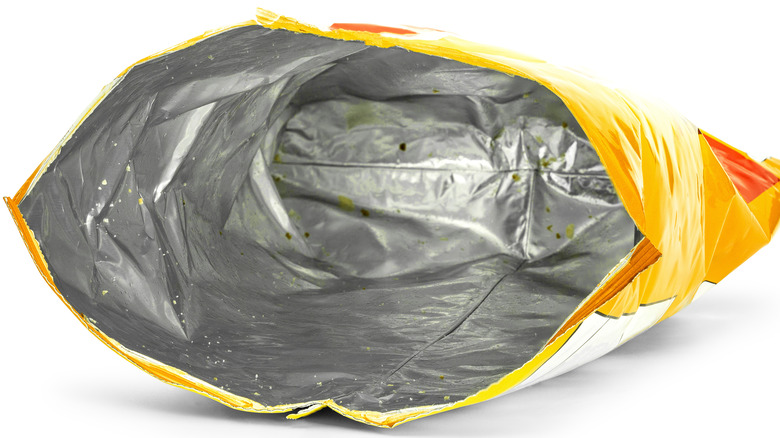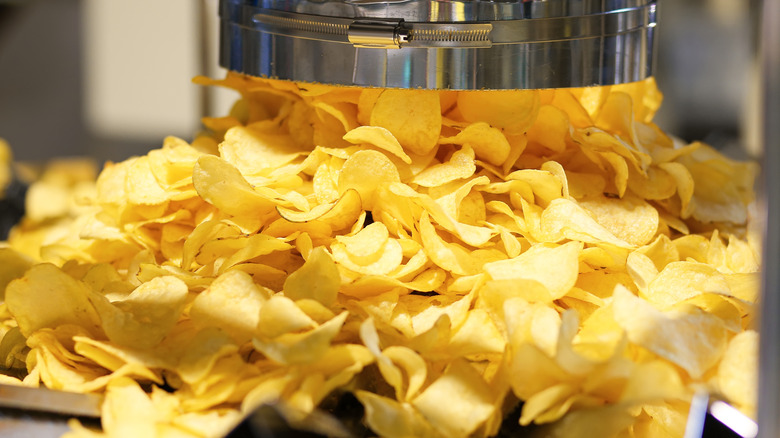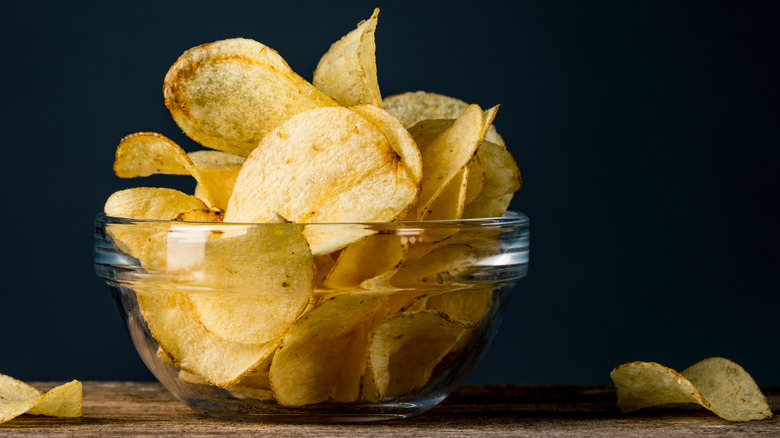The Chaotic Period During Wartime When Potato Chips Went Extinct
If you've ever had a craving for a particular snack and been unable to find it in stock at the grocery store, you might begin to have the faintest understanding of how impactful food shortages can be. A food shortage can be the result of countless factors, and no product is safe from these frequent and sudden impasses in the supply chain.
Unseasonable winter weather led to massive problems in the 2022 poultry market, though it seems like the chicken wing shortage is improving in 2023. But you should still expect food shortages in 2023. Texas droughts are affecting the supply of beef cattle, heat waves have made it difficult to harvest Champagne grapes, there is a dearth of dairy farm workers currently churning out butter, and an avian flu epidemic has made buying eggs a pricey proposition. Additionally, it may be harder to make a seasonal salad this spring, as a bizarre cyberattack against Dole has caused bagged lettuce shortages.
In the 1940s, a certain snack food was difficult to find, but the potato chip's momentary scarcity cannot be attributed to climate change or consumer demand. Instead, the potato chip shortage came about as a result of war.
A rationing America still yearns for potato chips
During World War II, Americans were forced to adapt their eating habits so that more food supplies and factory space could go toward the war effort — this was called rationing. People began planting personal gardens to lessen their produce needs, and meatless meals became a common occurrence. Meats, sugar, and other fatty foods were among those items that found themselves on the chopping block.
American citizens could begrudgingly accept being stripped of their steaks and sweet treats, but when the U.S. government attempted to cease potato chip production, citing the fact that the salty snack food was not a strictly essential item, that was a step too far. The historical text "Food and Drink in American History" tells us that potato chip manufacturers, whose product had recently seen a surge in popularity due to the introduction of vacuum-seal snack bags, successfully convinced the War Production Board to overturn this designation, which set the stage for the post-war potato chip renaissance.
The potato chip industry after World War II
In "Food and Drink in American History," author Andrew F. Smith explains that after the potato chip industry convinced the War Production Board to allow for the production of their snack, the potato chip began to experience a massive surge in popularity. Due to the fact that there were strict rations in place on both sugar and chocolate during World War II, Americans didn't have access to a lot of their favorite sweet treats. Potato chips filled the snack-shaped holes in their hearts, and the market for crispy spud slices steadily rose. In fact, it was during the World War II era that the colossal chip conglomerate Frito-Lay emerged.
While American manufacturers needed to convince the government to loosen production restrictions on potato chips, a similar ban would've been unthinkable in the United Kingdom, where potato chips, or crisps, were consistently being shipped to the battlefield and played an important role in feeding allied forces. Your average homemade potato chip recipe calls for little more than potato slices and salt. It's surprising that a simple snack can have such a rich history.


